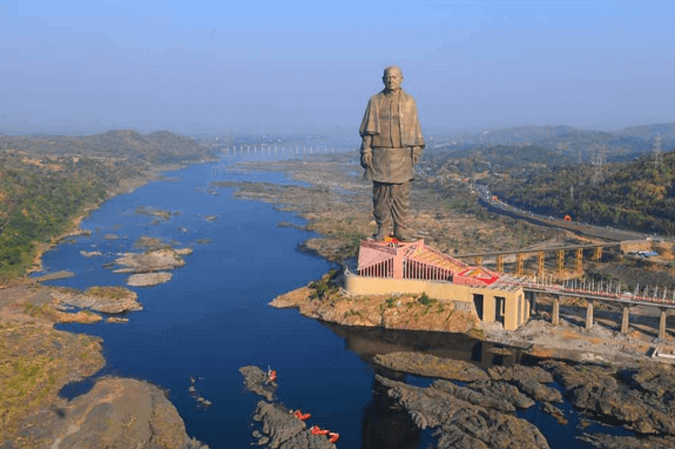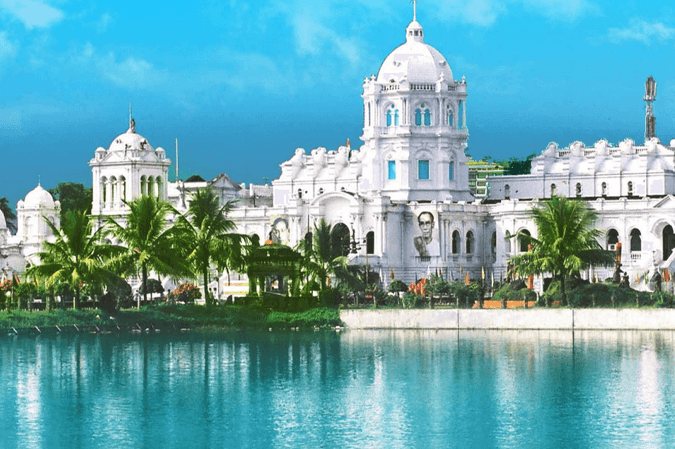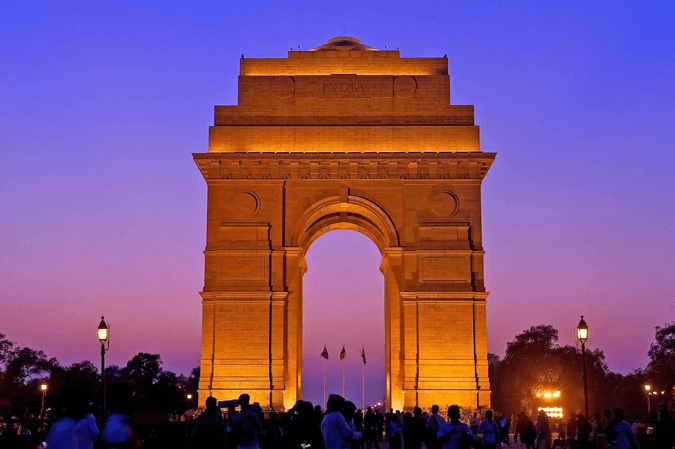1. History
Gujarat, located in the western part of India, has a rich history that dates back to ancient times. The region was part of the Indus Valley Civilization, with significant sites like Lothal and Dholavira showcasing advanced urban planning and maritime trade. Over centuries, Gujarat has been ruled by various dynasties, including the Mauryas, Guptas, and Solankis. The state also witnessed the influence of Islamic rulers during the Delhi Sultanate and the Mughal Empire. The Portuguese established a presence in Diu, and later, the British East India Company controlled parts of Gujarat. Mahatma Gandhi, born in Porbandar, led the Indian independence movement, making Gujarat a key region in the struggle for freedom. Gujarat became a state within the Indian Union on May 1, 1960, following the separation from the Bombay State.
2. Landscape
Gujarat boasts a diverse landscape that includes the following regions:
- Kutch: A large arid region with the famous Rann of Kutch, a seasonal salt marsh that transforms into a vast white desert during the dry season.
- Saurashtra: A peninsular region with a mix of fertile plains, coastal areas, and hills.
- Central Plains: The fertile plains of Gujarat, drained by rivers like the Sabarmati and Narmada, support agriculture.
- Aravalli Range: The northeastern part of Gujarat is characterized by the Aravalli hills, which are rich in mineral resources.
- Coastal Areas: Gujarat has the longest coastline in India, with prominent ports like Kandla and natural harbors like those in Surat.
3. Area
Gujarat covers an area of approximately 196,024 square kilometers (75,685 square miles), making it the fifth-largest state in India. The state is bordered by Rajasthan to the north, Madhya Pradesh to the east, Maharashtra to the south, and the Arabian Sea to the west.
4. Climatic Conditions
Gujarat experiences a semi-arid to arid climate, with significant variation across different regions:
- Summer: (March to June) is typically hot and dry, with temperatures often exceeding 40°C (104°F) in many parts.
- Monsoon: (June to September) brings moderate to heavy rainfall, especially in the southern and eastern regions, while Kutch receives very little rain.
- Winter: (November to February) is mild and pleasant, with temperatures ranging from 12°C to 30°C (54°F to 86°F).
5. Historical Places
Gujarat is home to numerous historical and architectural marvels:
- Somnath Temple: One of the 12 Jyotirlingas, this temple has been rebuilt several times, having been destroyed by invaders.
- Rani ki Vav: A UNESCO World Heritage site, this intricately designed stepwell in Patan is a masterpiece of Maru-Gurjara architecture.
- Champaner-Pavagadh Archaeological Park: Another UNESCO site, this park includes a mix of Hindu and Islamic architecture from the 8th to 14th centuries.
- Sabarmati Ashram: Located in Ahmedabad, this ashram was Mahatma Gandhi’s home and a center for the Indian independence movement.
- Laxmi Vilas Palace: A grand palace in Vadodara, built by Maharaja Sayajirao Gaekwad III in a blend of Indian and European styles.
6. Festivals
Gujarat is known for its vibrant festivals, which reflect the state’s cultural diversity and spirit:
- Navratri: The most famous festival in Gujarat, celebrated with Garba and Dandiya Raas dances for nine nights, honoring the Goddess Durga.
- Uttarayan (Makar Sankranti): The International Kite Festival is held during this festival, where the sky is filled with colorful kites.
- Diwali: Celebrated with great fervor, Diwali marks the victory of good over evil with fireworks, lamps, and sweets.
- Rath Yatra: Held in Ahmedabad, this festival involves a grand procession of Lord Jagannath’s chariot through the streets.
- Modhera Dance Festival: Held at the Sun Temple in Modhera, this festival showcases classical dance performances against the backdrop of ancient architecture.
7. Environment
Gujarat is known for its unique and diverse ecosystems, which include:
- Gir National Park: The only home of the Asiatic lion, this park is a critical conservation area and a popular wildlife destination.
- Rann of Kutch: This salt desert is home to the Indian wild ass and serves as a breeding ground for flamingos.
- Marine National Park, Gulf of Kutch: India’s first marine national park, it is known for its rich marine biodiversity, including coral reefs and mangroves.
- Nalsarovar Bird Sanctuary: A haven for migratory birds, including flamingos, pelicans, and many other species.
Gujarat has faced environmental challenges such as desertification, water scarcity, and industrial pollution. However, efforts are ongoing to promote sustainable development, conserve biodiversity, and manage natural resources effectively.
8. Society
Gujarat is a culturally diverse state with a population comprising various communities, including Hindus, Muslims, Jains, and Parsis. The state is known for its entrepreneurial spirit, with a strong tradition of trade and commerce. Gujarati is the official language, though Hindi and English are also widely spoken. The state’s cuisine is predominantly vegetarian and known for its distinct flavors, with dishes like Dhokla, Thepla, and Fafda being popular. Gujarat has also made significant contributions to Indian art, culture, and literature, with prominent figures like Mahatma Gandhi and Sardar Vallabhbhai Patel hailing from the state. The state is also known for its handloom and textile industry, including Patola silk and Bandhani tie-dye.
9. Interesting and Hidden Facts
- Gujarat’s Alcohol Prohibition: Gujarat is one of the few states in India where the sale and consumption of alcohol are prohibited.
- World’s Tallest Statue: The Statue of Unity, a tribute to Sardar Vallabhbhai Patel, stands at 182 meters (597 feet) and is the tallest statue in the world.
- First State to Start a Solar Park: Gujarat is home to the Charanka Solar Park, one of Asia’s largest solar parks, leading the way in renewable energy.
- Ancient Port City: Lothal, an ancient city in Gujarat, was one of the world’s earliest known ports, dating back to the Indus Valley Civilization.
- Largest Salt Desert: The Rann of Kutch is the largest salt desert in the world and hosts the annual Rann Utsav, attracting tourists from around the globe.
Sources
- History and Cultural References:
- Majumdar, R.C. History of Gujarat. Bharatiya Vidya Bhavan, 1960.
- Desai, A.R. Social Background of Indian Nationalism. Popular Prakashan, 2000.
- Geography and Landscape:
- Encyclopedia Britannica, “Gujarat,” 2022.
- Gujarat Tourism Official Website, “Explore Gujarat,” 2023.
- Climate:
- Indian Meteorological Department (IMD), “Climatic Conditions of Gujarat,” 2022.
- Historical Places:
- Archaeological Survey of India, “Monuments of Gujarat,” 2021.
- Lonely Planet India, Gujarat: A Cultural History, Lonely Planet Publications, 2020.
- Festivals:
- The Hindu, “Festivals of Gujarat,” 2022.
- Gujarat Tourism Official Website, “Festivals and Events,” 2023.
- Environment:
- Gujarat Forest Department, “Biodiversity and Conservation in Gujarat,” 2021.
- Ministry of Environment, Forest and Climate Change, “Environmental Profile of Gujarat,” 2020.
- Society:
- The Times of India, “Gujarat: Social Indicators and Development,” 2022.
- United Nations Development Programme (UNDP), “Human Development Report 2020”.
- Interesting and Hidden Facts:
- Economic Times, “Unique Aspects of Gujarat’s Economy,” 2022.
- Gujarat Tourism Official Website, “Interesting Facts about Gujarat,” 2023.
- Image Source: ahmedabadcity.org



